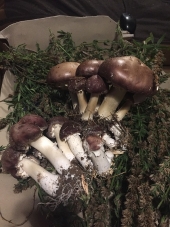




Some places need to be wild
 1
1




A human being should be able to change a diaper, plan an invasion, butcher a hog, conn a ship, design a building, write a sonnet, balance accounts, build a wall, set a bone, comfort the dying, take orders, give orders, cooperate, act alone, solve equations, analyze a new problem, pitch manure, program a computer, cook a tasty meal, fight efficiently, die gallantly. Specialization is for insects.
-Robert A. Heinlein

 1
1




List of Bryant RedHawk's Epic Soil Series Threads We love visitors, that's why we live in a secluded cabin deep in the woods. "Buzzard's Roost (Asnikiye Heca) Farm." Promoting permaculture to save our planet.
 1
1




"Study books and observe nature; if they do not agree, throw away the books." ~ William A. Albrecht




Some places need to be wild
 1
1




Some places need to be wild
 2
2




















List of Bryant RedHawk's Epic Soil Series Threads We love visitors, that's why we live in a secluded cabin deep in the woods. "Buzzard's Roost (Asnikiye Heca) Farm." Promoting permaculture to save our planet.
 1
1






 1
1




Permaculture...picking the lock back to Eden since 1978.
Pics of my Forest Garden




Some places need to be wild
















List of Bryant RedHawk's Epic Soil Series Threads We love visitors, that's why we live in a secluded cabin deep in the woods. "Buzzard's Roost (Asnikiye Heca) Farm." Promoting permaculture to save our planet.




Is vermiculture a viable way to dispose of this bedding?

|
Nothing? Or something? Like this tiny ad:
rocket mass heater risers: materials and design eBook
https://permies.com/w/risers-ebook
|




